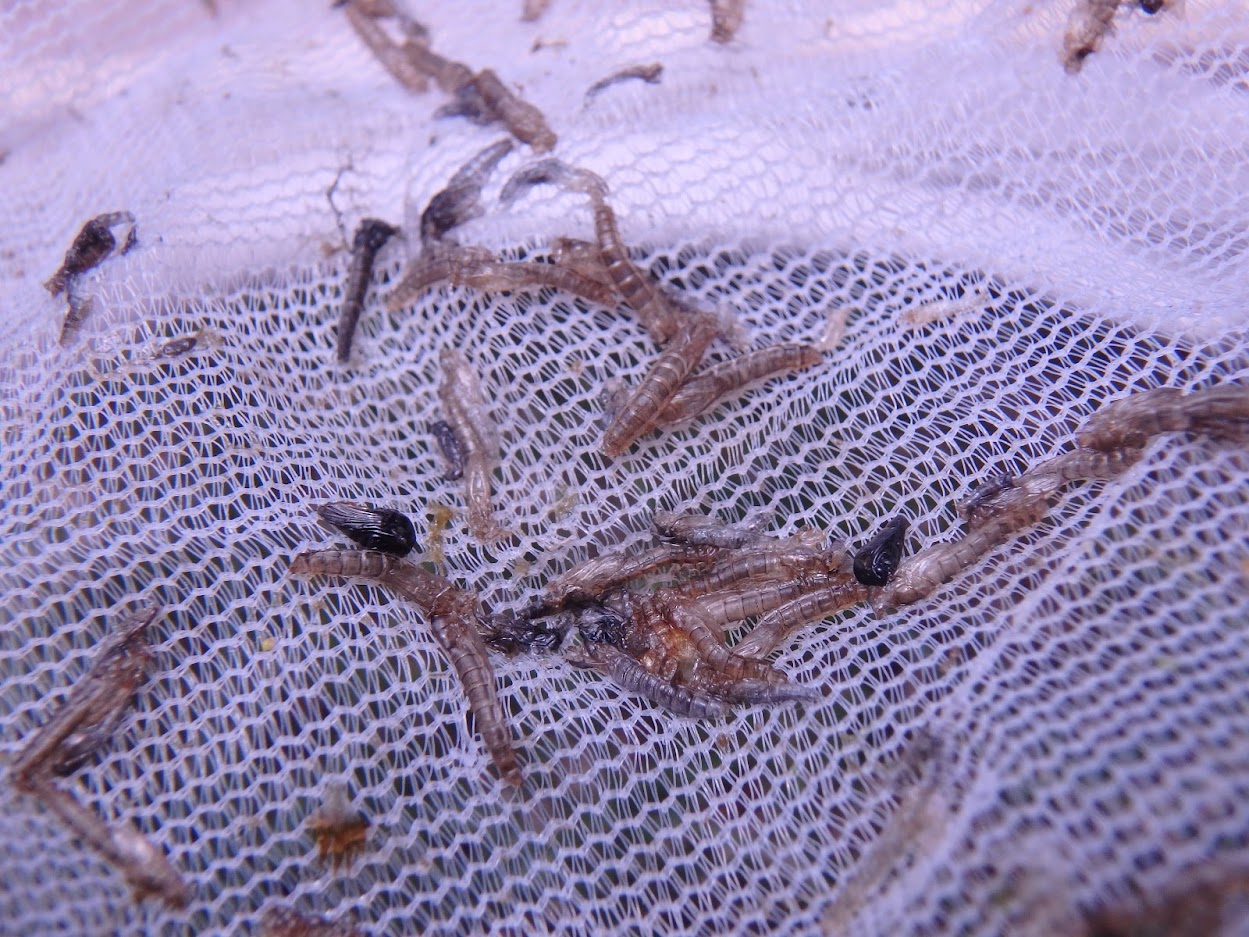FP Merger 02/26/2019 Photo Album
Before reading this narrative on a new fly I developed, I encourage you to follow this link, Frying Pan River 05/10/2018, and check out the photos of the naturals, that I seined from the river on that date. If you take the time to read the report, you will learn that I experienced a relatively frustrating day on May 10, 2018. At the time I made a mental note to revisit this day during fly tying season, and the FP merger is the product of that commitment. A massive quantity of trout rose over a four hour period within the twenty by twenty yard area that I occupied, and I was largely thwarted in my efforts to take advantage of the dense midge hatch. Ultimately I concluded that my greatest problem was the lack of tiny size 24 flies.

Dense Midge Hatch Lingered for Four Hours
Before tying the FP merger I retrieved images of the mass of natural biomass, that I captured, when I seined the river. The net included translucent tan-gray husks and midges in the process of emerging from the pupal case. The emergers displayed a medium to dark gray body and a dark, almost black head. In case I visited the Frying Pan River at the same time of year again in the future, I sat down at my vise and designed a fly, that I hope replaces frustration with joy.
Size was the most important factor to me, so I began with a size 24 Tiemco 100 dry fly hook. I started medium gray 6/0 thread near the eye of the hook and covered the shank to the bend. I returned to a point 1/3 of the shank length from the hook eye and built up a very slender tapered body. The naturals possessed extremely narrow bodies, and I opted for thread only to minimize bulk. Next I stripped a clump of fibers from a gray CDC feather, and I tied these in at the 1/3 point behind the hook eye. I estimate that I used ten fibers for each wing. I wanted enough bulk to make it visible, but I did not want it to flare out so as to represent an open fluttering wing. An emerging wing was the ideal image that I sought.

Size 24
At this point I knotted the gray 6/0 thread, cut it off and replaced it with 8/0 black thread. I did this to minimize the bulk around the small head space on a size 24 hook. I retrieved some black ostrich herl from my supplies and stripped one four inch strand from the stem. I tied the black herl in front of the CDC wing and made two wraps and then tied it off and did a three wrap whip finish. As a last step I made an angle cut of the CDC wing, so that it was just short of the hook bend.

A Batch of Seven and Associated Materials
I am very pleased with the product of my design. I suspect size is the most important factor, and therefore the slender size 24 will match the size. Shape and silhouette are probably the next consideration, and I feel that the narrow body, small wing tuft and black ostrich herl head are representative of the real bugs. Color is the third factor, and gray and black are a solid choice that represent many natural insects. I am sure that I could browse through catalogs and search on line and find the same fly designed previously by someone else, but it was fun to attack the problem with my personal thought process. The fly will be next to impossible to track, but I can always use the ploy of a six to twelve inch dropper behind a more visible front fly.
The trout of the Frying Pan River are probably in defense mode already with the creation of this tiny fly. I hope to visit the tailwater in early May in 2019.
Like this:
Like Loading...
